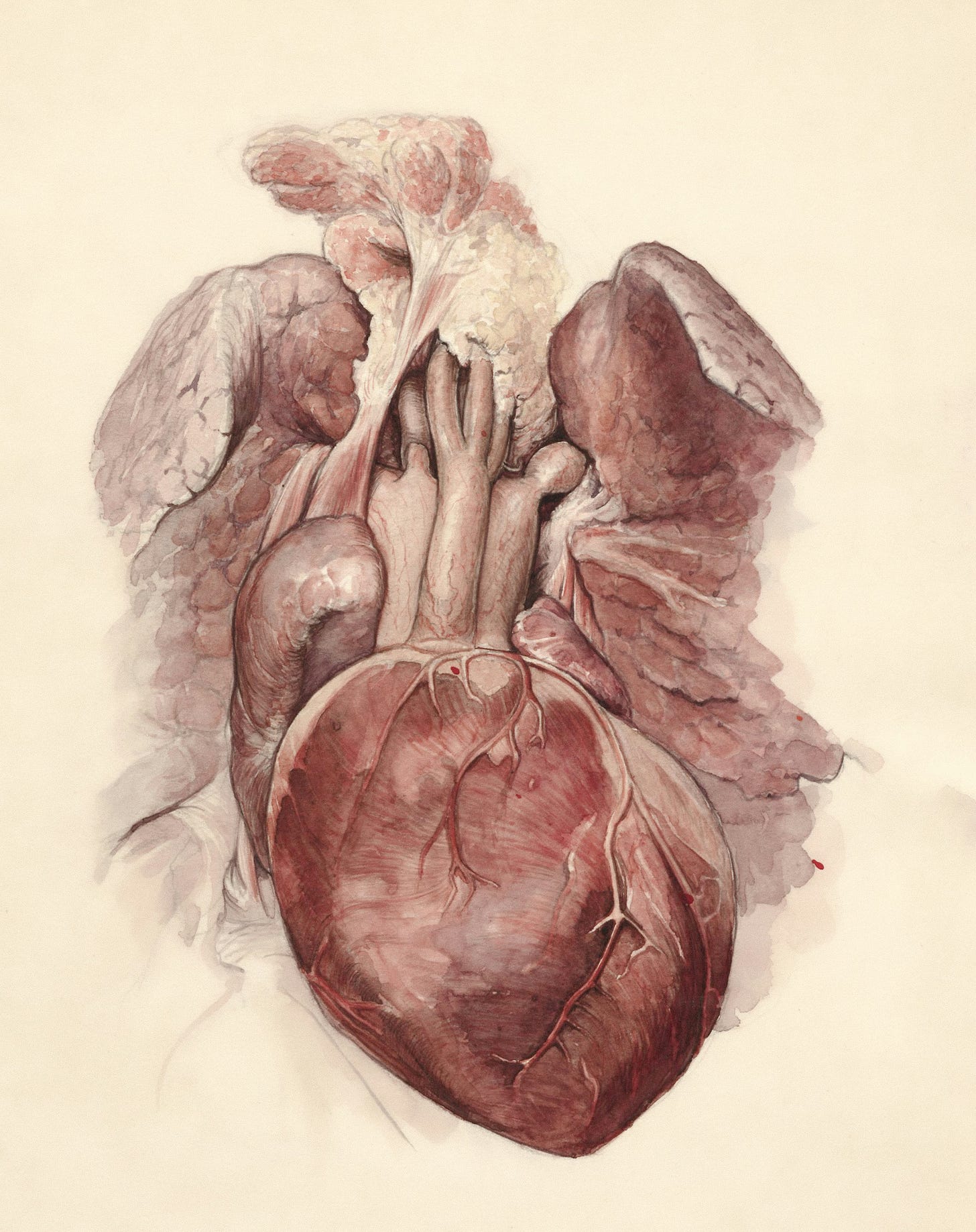There is a bird, night-beaked and moth-bodied, that can withstand the fiercest of storms. It is the smallest seabird in the world, weighing one tenth of a human heart. It is called the storm petrel, and in the open ocean its leaf-light body survives the most violent of weather.
Once, it was thought that these tiny birds carried storms upon their backs.
Imagine it: their moth-small bodies hauling a hurricane across the sea.
When I first started studying evolution, I was astonished by the field of epigenetics. Epigenetic molecules attach themselves to our genetic code during our lifetime, in response to traumatic events. They modify how our bodies interpret our DNA, improving our ability to withstand, to survive. If we live through a famine, for example, these molecules make our bodies put weight on more easily, therefore improving our chances of surviving in a world where food is scarce.
Mothers and fathers pass these molecules on to their children and grandchildren. This is what we call epigenetic inheritance1. What it means is that the various traumas endured by our recent ancestors are mapped within our bodies, cradled within our cells. What it means is that the various traumas of our own lifetimes will be mapped inside the bodies of those who come next. This map serves as a survival mechanism; a way for our bodies to prepare for what might come. A gift handed down from one body to the next.
In the absence of trauma, no epigenetic molecules attach themselves to our genetic code. This absence is the only trace of a life lived easily. No cellular baggage. Bodies a fraction lighter. Why carry a map if you will not have to navigate it?
There are many different modes of memory. Epigenetics can be thought of as a sort of inaccessible intergenerational memory, but accessible memories are, of course, mainly stored (or, more accurately, assembled) within our brains2, in networks of neurons. And just as with epigenetics, our brains are also primed to remember the negative. Memories that are formed through negative experiences are stronger: they are more vivid and they last for longer. This isn’t only true in humans, but across many species.
Neuronal pessimism is a survival mechanism.
Remembering the negative helps us to live. The lighter things in life tend not to have such a direct benefit.
It can be hard to find light in a world so brutal; harder, still, because our minds and bodies are not primed to hold onto beauty or joy or light in the same way they hold trauma and pain. Beauty, if we let it, slips through our hands, our minds, our cells; it is remembered in its absence, not its presence. Pain is tangible; beauty is a ghost.
Maybe it is helpful to remember this when times are difficult. Maybe it will help us be kind to our minds, to our bodies; to other minds and other bodies. We are just small things, carrying the weight of timeless storms upon our backs.
Maybe it will help us to remember that when we do find light and beauty and joy, we must hold onto it with both hands. Grip it tight. Soak it in. Think of its shape over and over again until it maps its way into our minds.
And maybe it is helpful to remember, too, how strong our strange, small bodies are. Storm-bearers, over and over, time and time again.
Reader, thank you so much for being here. My newsletter is free, but if you can afford to support my writing financially, I would really appreciate it.
If you don’t want to pay for a subscription but would like to pay a little something for this article, you can tip me instead. Any amount is hugely appreciated.
If you’d like to become a founding member of this seedling Substack, you'll receive an original watercolour and some treasures gifted to my island by the North Sea (and my gratitude for such a wonderful show of support). You can see the founding member option by clicking the subscribe/upgrade button above.
If you’re intrigued by this idea, I recommend listening to this podcast with neuroscientist Bianca Jones Marlin. It’s important to add that what I’ve written is, of course, a necessary simplification of a very complex (and mind blowing) field of research.
I say that of course memories are stored in the brain as if it is obvious, but day by day this is a fact that becomes muddier. Last week, a study was published showing that cells throughout our bodies – not just brain cells – have the capacity to remember.







The storm petrol is an amazing creature, bending with the wind like a reed, folding itself into the storm to be the storm in a way, survival through acceptance rather than battle. Quite beautiful.
One of the themes in my writing is the idea that we are always choking on the smoke of fires lit in the past. That whatever we do as individuals or societies isn't isolated to a period of time, but, like smoke, travels through time to effect the present, an forever embrace between past and present that never releases. Until I read your writing here on epigenetics I never really made the connection. I wonder if there is a mechanism beyond DNA that allows for a similar mechanics in so many realms?
Anyway, thanks so much Rebecca. I really enjoyed this piece for so may reasons :)
An absolutely stunning piece of writing Rebecca. It will travel in me, as memories of storm petrels do, exquisite in their darting grace.